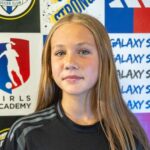Dr. Wendy LeBolt: Dangerous headers are just stupid
 “Playing football is fun. Playing football is healthy.”
“Playing football is fun. Playing football is healthy.”
So says the header on the FIFA’s medical page, which stands in stark contrast to the large photo below showing German midfielder Christoph Kramer sitting on the pitch, his head bent into his hand. Doesn’t look fun or healthy to me. The headline reads: “FIFA’s Medical Committee Proposes New Protocol for the Management of Concussions.”

With pro and NCAA football concussion lawsuits and cash settlements on the simmer, the recent class-action lawsuit filed against FIFA, U.S. Soccer and other organizations by a group of concerned American parents may have gotten FIFA moving on this issue. ESPN commentator and former MLS star Taylor Twellman says this falls ways short of what is needed, but many voices are weighing in.
I’d like to think this is a step in the right direction, but the bottom line is: Wherever there is any pressure to continue play from the coach or player which supersedes medical advice, and puts a player at risk of further or more dangerous injury, we’re in the wrong.
But does that really mean that kids should stop heading the ball?
I found a young woman with wisdom well beyond her years who has a great answer to this question. This is the story she shared with me.
It doesn’t begin well.
Danielle refused to challenge for what she considered a “dangerous header” in a league match and was yanked from the game. Exactly how the conversation went on the sidelines Danielle did not share in detail, but she told the coach she wasn’t and didn’t plan to contest for balls in the air that she considered dangerous. This, said in a 15-year-old’s parlance, earned her push-ups as penalty.
You should know (and it’s not clear whether the coach did) that two and a half years ago, 12-year-old Danielle’s collision with a poorly-padded wall behind the basketball hoop, left her wracked by seizures on the gymnasium floor. Her parents called me in a panic after she was rushed to the emergency room.
+ READ: Does heading a soccer ball really lead to brain injury?
Now, after several seasons were lost to basketball and then soccer, and after many, many trips to the concussion specialist, Danielle has returned to play. Her parents will tell you they were nervous at first. They didn’t want her to head the ball, but she was a central midfielder. Headers are part of her job description. The coaches didn’t want her back until she was completely well, which, to the coach, meant she could do what she always did in the way she always did it, and without risk of injury.
But now Danielle plays differently, her dad tells me. She takes more balls with the chest and body. Oh, when she has a clean, uncontested header she plays it, and plays it confidently and well, he says. It’s a decision for Danielle. Balls that require what she considers dangerous challenges she backs away from.
Yet this coach of a high-level Virginia select squad, has dealt her push-ups.
Danielle’s parents didn’t rush to defend her. In fact, they admit Danielle may have been guilty of being a “bit too mouthy” with the coach. In that case, the player penalty may have been in order. But about the dangerous headers, there is no question: Danielle made the right call.
“On her high school team, Danielle has scored some nice goals off headers,” her mom tells me. “But the dangerous plays, where she would be crunched between two opponents, she avoids.”
+ WATCH: OMG! What a Goal! Goalkeeper scores late equalizer with backwards header [Video Highlights]

She knows what that might mean and she doesn’t want to give up playing the games she loves. She certainly doesn’t want to be back in the doctor’s office or the training room nursing headaches.
Unlike so many concussion stories, this one has a happy ending and had a really positive outcome. Credit Danielle’s travel team coach, who either thought she had been too harsh or just re-thought the dynamic of this coaching moment, but she sought Danielle out for a conversation.
Danielle let the coach know about her concussion history, and the two then discussed how Danielle could play those collision-prone balls effectively without physically using her head.
“I think the coach realized she was wrong,” Danielle’s mom says about this change of heart. “I don’t think she was aware of Danielle’s concussion history before that.”
I love when a coach does the right thing with a kid. But this instance raises some crucial questions:
- Do we know the concussion history of our players? Complicated concussions with extended recovery should be red-flagged for sure.
- Should we be insisting our players challenge for dangerous headers in the first place? Concussion history or not?
- Do we banish heading or change the rules about where and when a player can head the ball? Should this be dependent on age?
This is what I see at stake in the heading/concussion conversation today. Many (can I say all?) parents are leery of their kids going up for headers and risking their brains. Danielle, very wisely, has made an important distinction: Clean headers free from traffic seem safe to her because she knows how to time her execution and she doesn’t have to worry about the chuck that will take her off balance. She has no problem with those.
“Dangerous headers are just dumb,” she says, “I’m not doing that. I don’t care what the coach says.”
Now she sounds more her age. Not very many girls I know have the confidence to be that firm. I’m so proud of Danielle, for advocating for her own health as well as staying in the game. But what do we do with the rest of our players?
+ READ: We have a broken system when it comes to dealing with head injuries
At concussion seminars, I often get asked whether I would teach my players to head the ball and, if so, at what age? In my experience, when the ball starts to go in the air, they naturally start playing it with body parts other than their feet. (It is so rare at 7 that you have a kid who can execute the bicycle kick, but he’d be the exception.) That’s when they can start learning to trap it, run through it or play it to the ground with their belly and chest.
When they can do this, they have the coordination to begin taking a softly-tossed ball and control it to the ground. Not lots of repetitions. Not played by another player or played with the foot, and certainly not played in traffic. My concern about banning headers under 14, as some propose, is that players won’t develop the skill, strength and coordination to do it safely.
Of course, I would also recommend doing basic upper-body strengthening exercises to prepare them for using their whole bodies in play. (Check in at the Fit2Finish YouTube site, where we’ll be posting three videos with simple strengthening exercises for soccer players using balls, bands and tubing.)
However, in today’s environment of very competitive play at all ages, I do think we need to keep the young ones from heading punts, and all players should be prohibited unless they have the timing and technique to do it correctly. Or maybe we just raise more players like Danielle who are choosing not to challenge for those dangerous balls.
Perhaps we can send that message to U.S. Soccer: A kid who is choosing to stay safe on the field of play should not have to put herself at a competitive disadvantage when she declines to throw her body into the melee. Rule change suggestions, anyone?
In my book they can still try the clean headers. These are part of the game and, executed well, can still be done safely by all accounts. And, frankly, unless they change this for college or professional play, athletes will find themselves executing headers in traffic at some point. But most of our kids would be better served by learning how to take that ball out the air with their chest or torso, and then putting it back on the floor where they can do something with it.
—
SOCCERWIRE MARKETPLACE
- MANCHESTER CITY SOCCER CAMPS
- FC Bayern Soccer Camps - $30 PROMO CODE: BMSOCCERWIRE
- Real Colorado Cup 2026
- Join a College Coaches Showcase Camp Today
- MICFootball Punta Cana 2026
- Dana Cup Hjørring 2026
- 15th Annual Loudoun Soccer College Showcase
- OFFICIAL FC BARCELONA SOCCER CAMPS - PROMO CODE: FCBSOCCERWIRE
- New England Copa Surf 2026
- Adidas National Cup 2026











